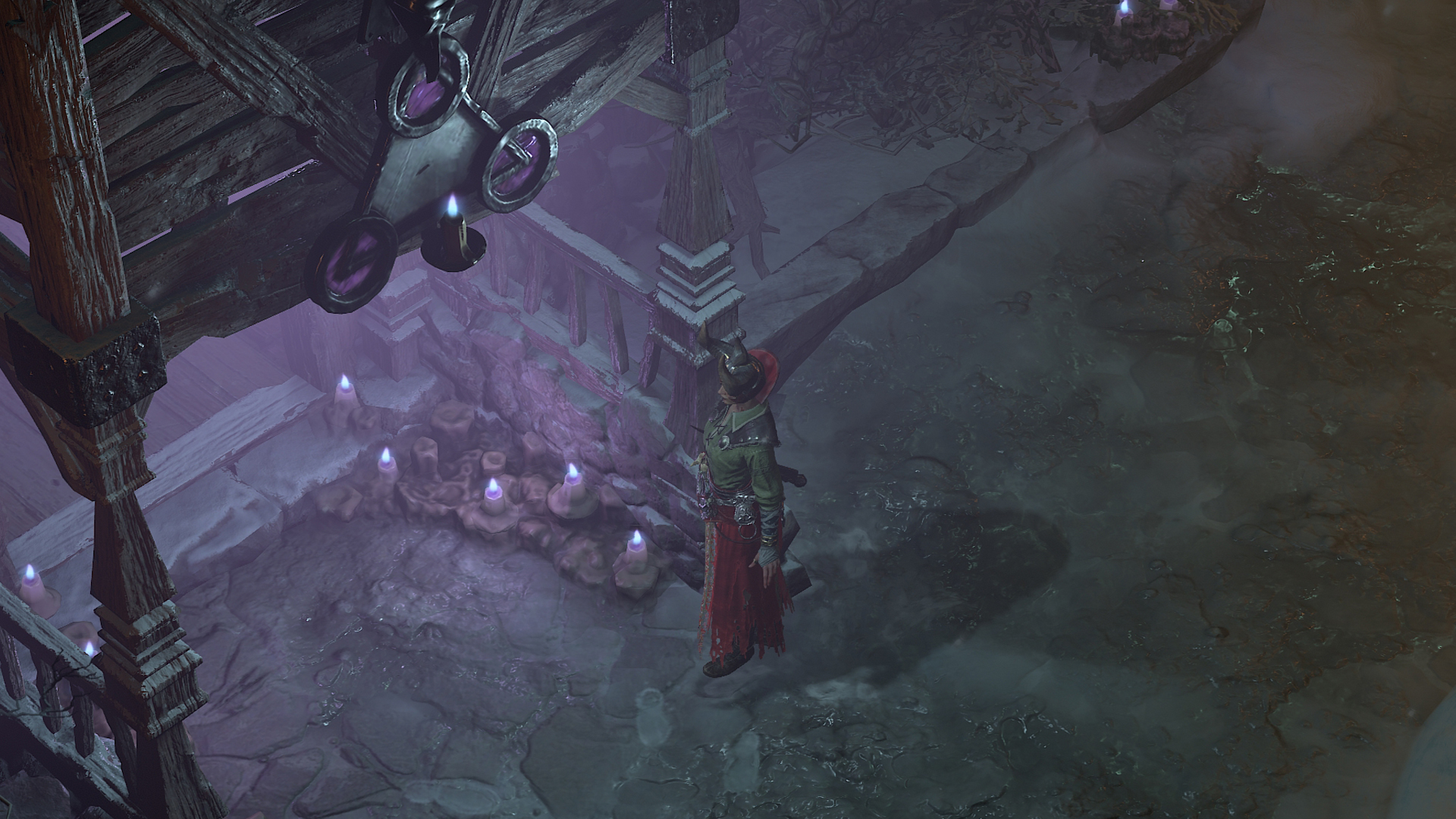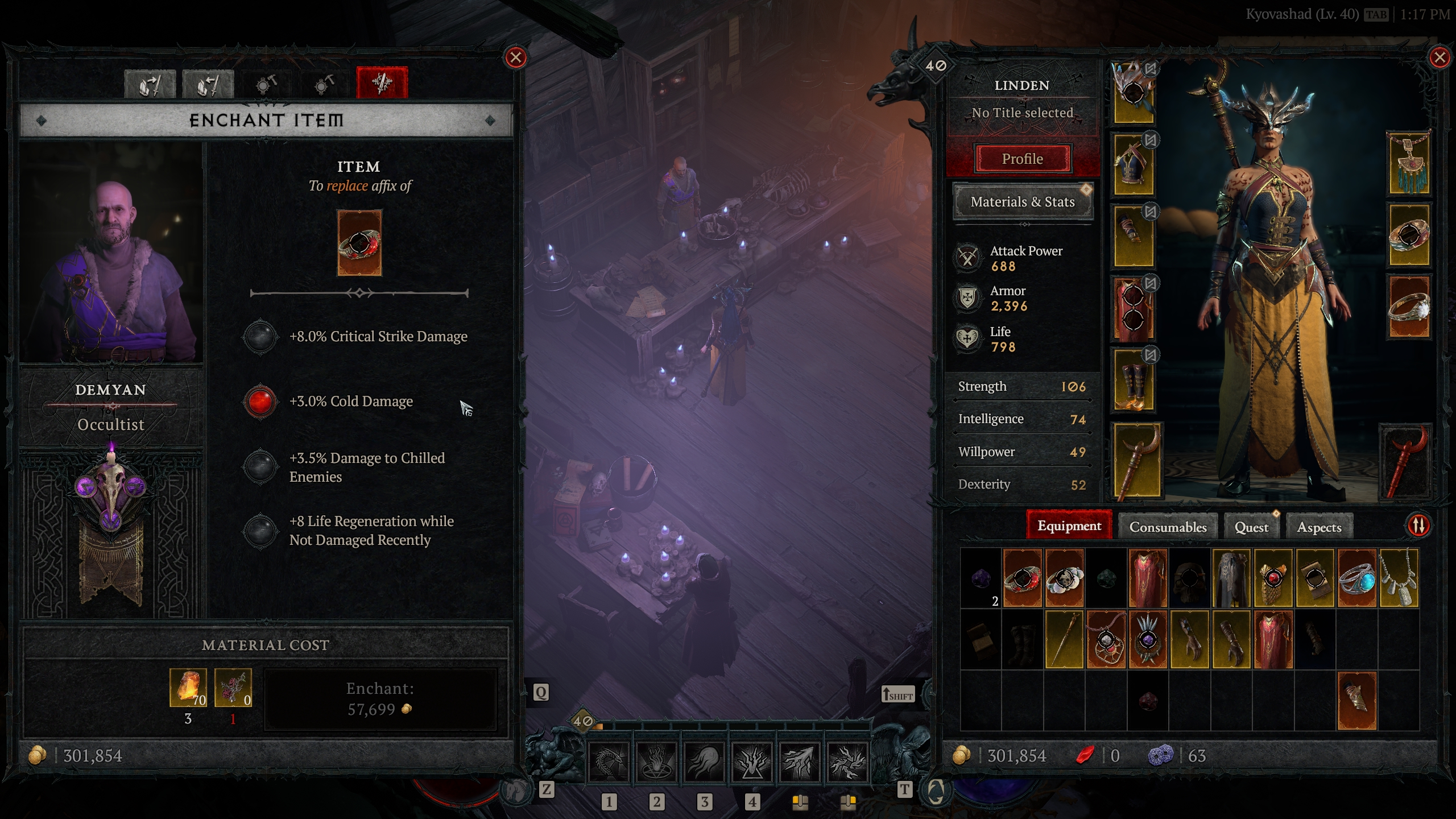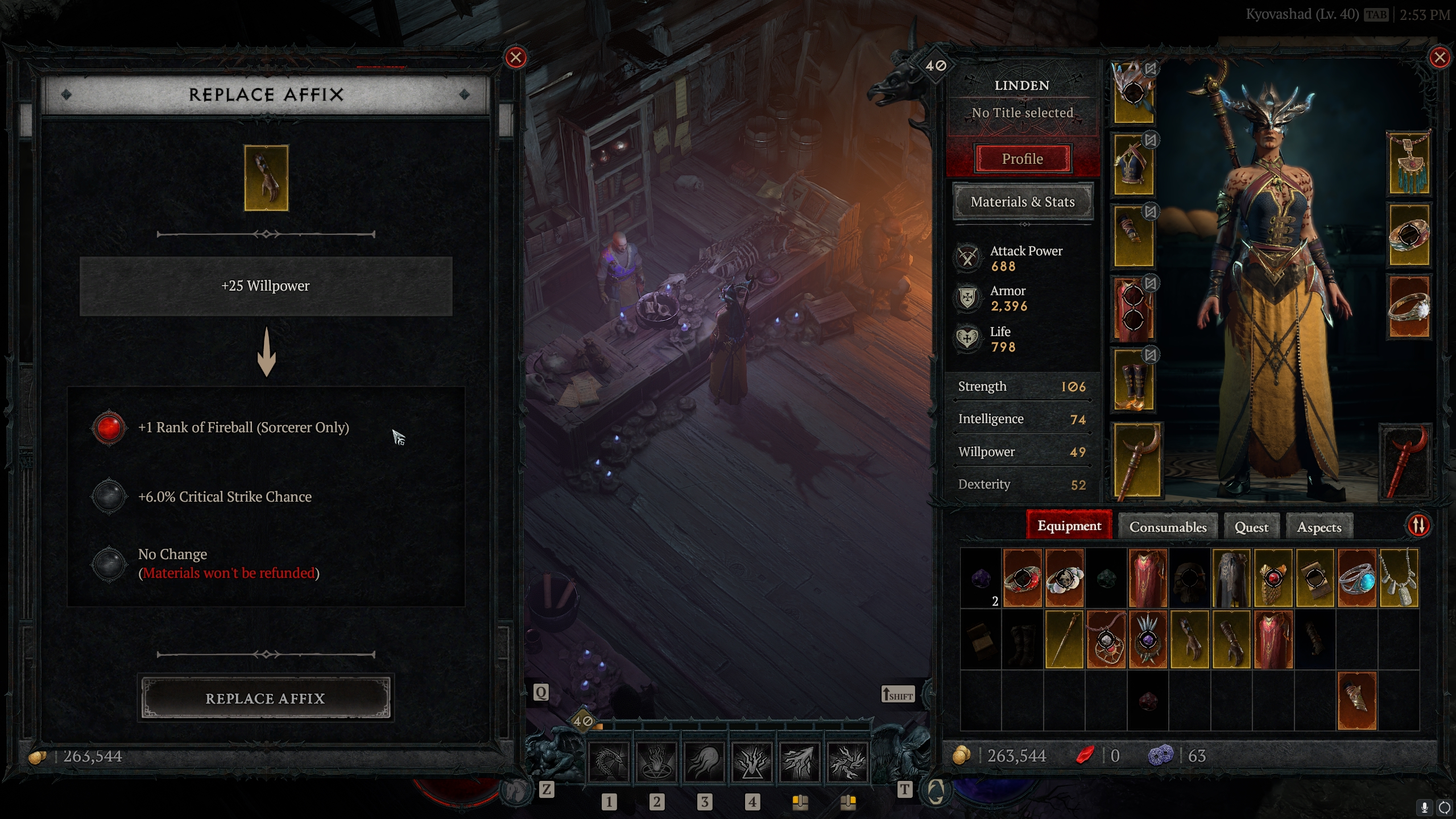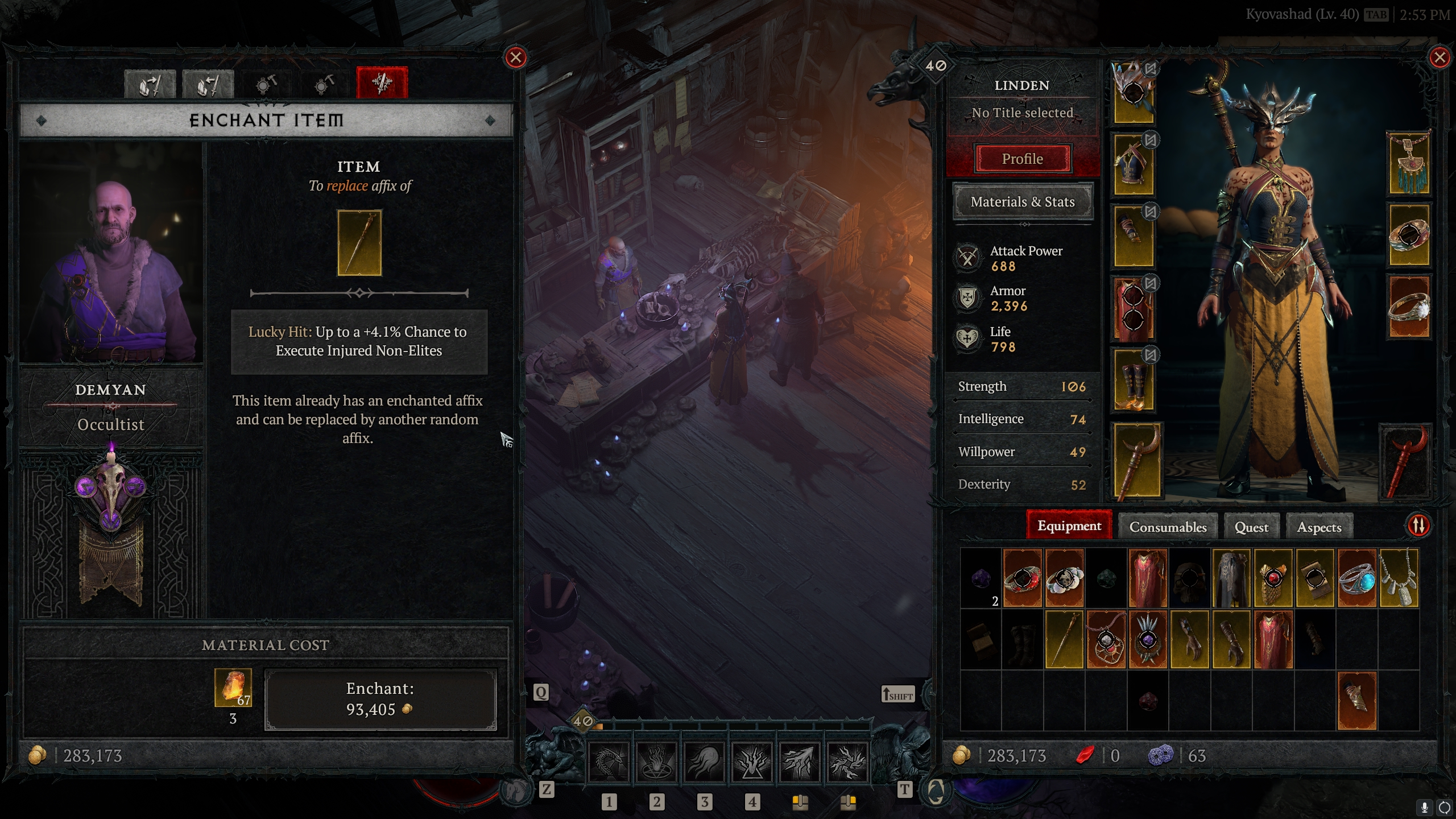Diablo 4 item enchantment: How to improve your gear
Switch out those useless stats or damage bonuses.

If you're wondering if Diablo 4 item enchanting will be a thing in the latest instalment of Blizzard's action RPG, you're in luck. If you played any of the previous games, tinkering with the stats and bonuses on your gear will no doubt be familiar, especially when you reach max level and you're trying to fine-tune your build.
Gear isn't the only thing you'll need to think about either—you'll need the right Aspects and gems to complement any build. That said, messing around with your gear is best left for when you hit max level as you'll be replacing stuff constantly as you get better drops. So with that in mind, and when you are ready to start squeezing everything you can out of your build, here's how Diablo 4 item enchantment works.
Diablo 4 item enchantment: How it works



You can enchant items at any Occultist from level 25 onwards or once you've added at least one Aspect to your Codex of Power. Occultists are found in most towns; these are the same NPCs that extract Aspects from legendary gear for you. If you've played Diablo 3, you'll be familiar with the process, which involves changing an unwanted bonus into something more suited to your class or playstyle.
Most items have bonuses for certain abilities, stats or other modifiers. You can change some of these from one bonus to another by enchanting the item, though only one bonus on an item can be changed, so choose carefully. Once an item has been enchanted, you can't change any other bonus, though you can reroll the bonus you've already changed as many times as you like if you want a different choice.
Each time you reroll on the same piece of gear, you'll be presented with different random options, but the price will go up. The choices you get will relate to the gear type too. So you won't roll a damage bonus on a pair of gloves, for example, but you might be able to reroll it to a different resistance type, or to get a defensive multiplier.
Item enchanting uses both gold and materials. The material cost also depends on the item's quality you're enchanting. Legendary gear costs far more than rare items, so it's best to salvage unwanted gear at the Blacksmith rather than sell it for gold. That way, when you really, really want to change that useless bonus on an otherwise perfect piece of gear, you'll have plenty of resources.
The biggest gaming news, reviews and hardware deals
Keep up to date with the most important stories and the best deals, as picked by the PC Gamer team.

Sarah started as a freelance writer in 2018, writing for PCGamesN, TechRadar, GamingBible, Red Bull Gaming and more. In 2021, she was offered a full-time position on the PC Gamer team where she takes every possible opportunity to talk about World of Warcraft and Elden Ring. When not writing guides, most of her spare time is spent in Azeroth—though she's quite partial to JRPGs too. One of her fondest hopes is to one day play through the ending of Final Fantasy X without breaking down into a sobbing heap. She probably has more wolves in Valheim than you.

